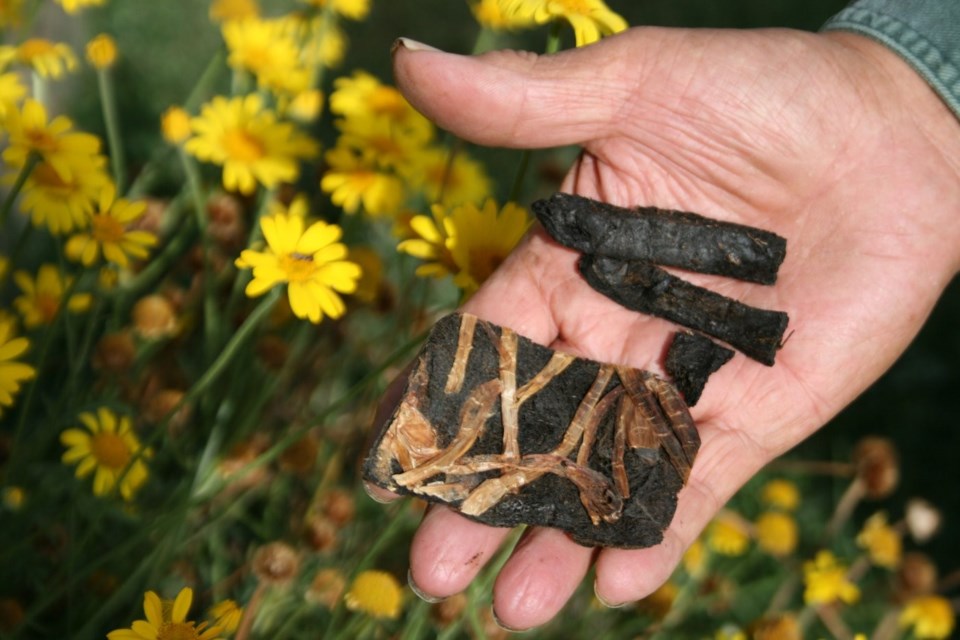The art of harvesting black lichen, commonly referred to as black moss, is a historical Ktunaxa tradition that yields an unexpected result.
Akisqnuk First Nation elder Alfred Joseph and his sister, Hazel Pascal, have recently begun experimenting with a traditional Aq’am process taught by the elders of the community to candy black moss.
“We had heard about the use of black lichen, or tree moss, and we had an elder from Aq’am that taught others how to harvest it and how to do the process,” Joseph explained, noting the end product results in candy often resembling that of licorice. “Nobody did it for quite a few years, then when we decided to do it as a family, we gathered people that had seen her go through the process, then we tried it.”
Historically, Joseph explained that both Ktunaxa men and women collected black lichen near the mountain-tops located in the Akisqnuk First Nation community.
When Joseph, Pascal and their peers tried to recreate the process on two occasions, three garbage bags were filled by participants with freshly picked black moss.
“Once we get it back to the homes, the women wash it and the men cannot be around any longer,” Joseph explained of the tradition, culture and community’s process for preservation.
Pascal indicated that the first step in cleaning their yield is to remove all the twigs from the black lichen before washing it twice.
While the black lichen is wet, the women are accountable for placing it on a cookie sheet covered with foil and layered between wild chives.
While it is being properly cleaned and prepared by the women, the men of the family traditionally dug a deep hole on the land, to hold a fire.
In this case, a hole was dug on the property, near Pascal’s garden, for the prepared trays of layered moss and wild chives to be buried under a combination of dirt, coal, leaves and tin foil.
Traditionally, the Ktunaxa men are responsible for perfecting the outdoor oven, so that the fire to cook it burns for a total of four days. Participating males are expected to stoke the fire on top of where the trays of black lichen are buried and baked until bake it can be liquified.
After the container is dug up, the moss is expected to have been cooked to form a solid baked good that can be cooled and chopped into narrow pieces to make candy.
Joseph chuckled retrospectively about once trying to replace the wild chives with water lily pads. He stated the process was flawed because the water lily pad leaves could not withstand the heat of the fire to the same degree that other plant-life could and were absorbed during the process.
“We’re always experimenting,” Joseph said with a smirk. “But it would be interesting to get it analyzed (after the process is completed) to see what nutrients are in there some time.”
Pascal and Joseph have completed the candy making process at least twice in recent memories, but both siblings agree there is always room to learn more through the process of trial and error.
“Some people call it Indian licorice,” said Joseph in good spirits, adding the results are inconclusive and still being perfected by the participants.
“Essentially, what happens is the liquid mixture dries, hardens and then the women cut it up at some point after it’s cooled off.”



